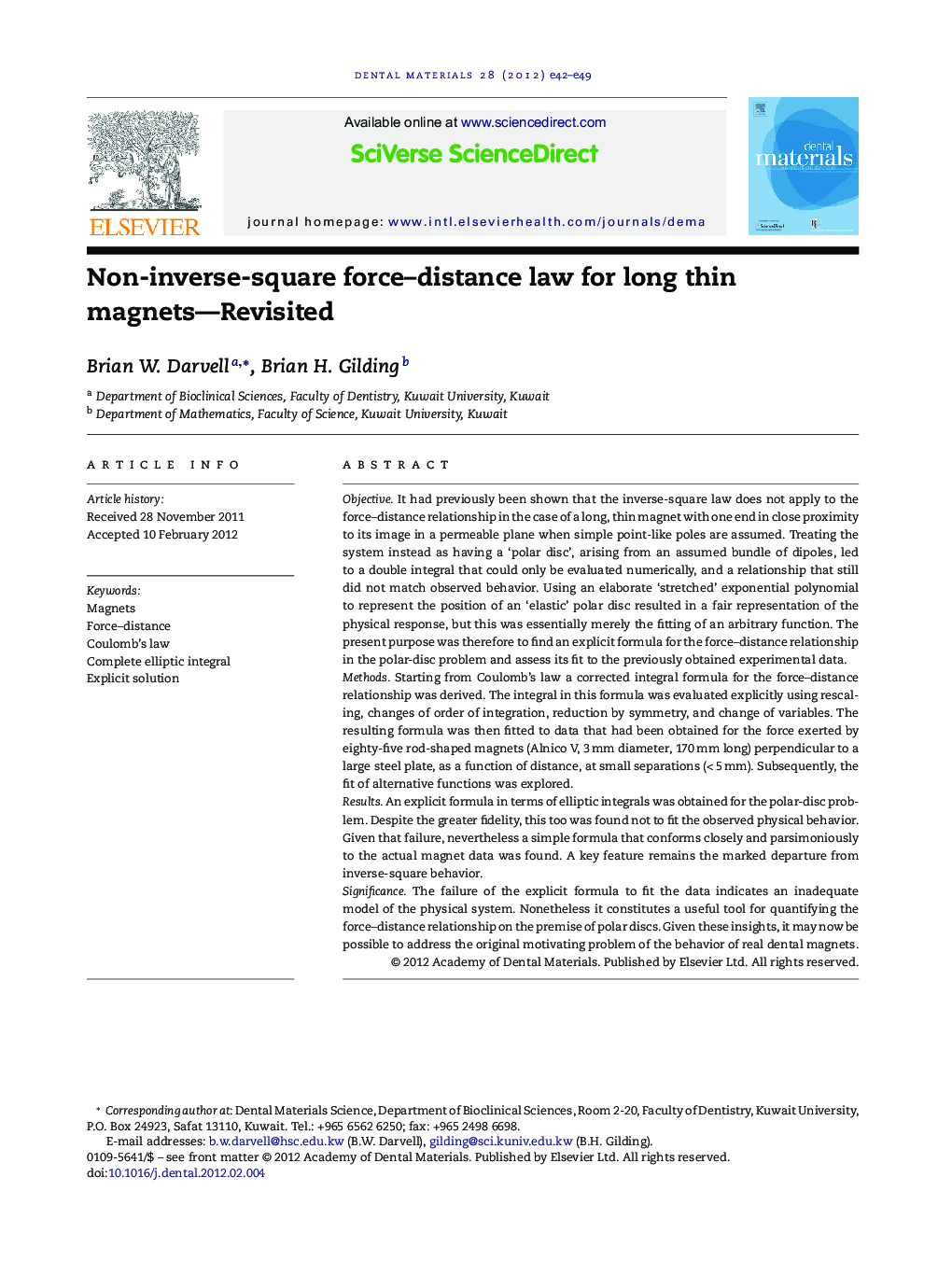| کد مقاله | کد نشریه | سال انتشار | مقاله انگلیسی | نسخه تمام متن |
|---|---|---|---|---|
| 1421414 | 986409 | 2012 | 8 صفحه PDF | دانلود رایگان |

ObjectiveIt had previously been shown that the inverse-square law does not apply to the force–distance relationship in the case of a long, thin magnet with one end in close proximity to its image in a permeable plane when simple point-like poles are assumed. Treating the system instead as having a ‘polar disc’, arising from an assumed bundle of dipoles, led to a double integral that could only be evaluated numerically, and a relationship that still did not match observed behavior. Using an elaborate ‘stretched’ exponential polynomial to represent the position of an ‘elastic’ polar disc resulted in a fair representation of the physical response, but this was essentially merely the fitting of an arbitrary function. The present purpose was therefore to find an explicit formula for the force–distance relationship in the polar-disc problem and assess its fit to the previously obtained experimental data.MethodsStarting from Coulomb's law a corrected integral formula for the force–distance relationship was derived. The integral in this formula was evaluated explicitly using rescaling, changes of order of integration, reduction by symmetry, and change of variables. The resulting formula was then fitted to data that had been obtained for the force exerted by eighty-five rod-shaped magnets (Alnico V, 3 mm diameter, 170 mm long) perpendicular to a large steel plate, as a function of distance, at small separations (< 5 mm). Subsequently, the fit of alternative functions was explored.ResultsAn explicit formula in terms of elliptic integrals was obtained for the polar-disc problem. Despite the greater fidelity, this too was found not to fit the observed physical behavior. Given that failure, nevertheless a simple formula that conforms closely and parsimoniously to the actual magnet data was found. A key feature remains the marked departure from inverse-square behavior.SignificanceThe failure of the explicit formula to fit the data indicates an inadequate model of the physical system. Nonetheless it constitutes a useful tool for quantifying the force–distance relationship on the premise of polar discs. Given these insights, it may now be possible to address the original motivating problem of the behavior of real dental magnets.
Journal: Dental Materials - Volume 28, Issue 5, May 2012, Pages e42–e49